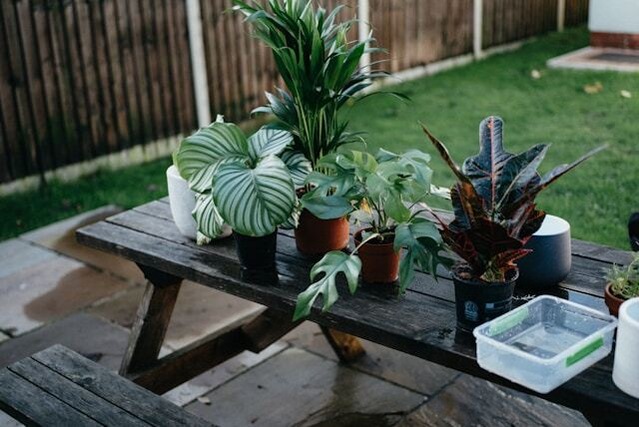
The days are getting shorter, and the nights are cooler—time to think about those potted outdoor plants you’ve nurtured all summer.
As you get your home ready for fall and start decorating your porch for the season, don’t forget about your beloved outdoor plants that might not handle the cold winter weather. If you’re wondering when exactly you need to bring them inside and how to keep them happy through fall and winter, you’re in the right place. Below are some simple tips to make the transition smooth and stressless for both you and your plants!
The First Question is; When Should You Bring Plants Inside?
You can always check the range of temperature that can be tolerate by your plants. But generally a good rule of thumb; When nighttime temperatures drop to 50°F (10°C), it’s time to move your plants indoors. Some tropical plants might need to come in even sooner, while tougher ones like succulents or herbs can stay outside a little longer. Keeping an eye on frost warnings is also smart—plants can get damaged by a sudden cold snap.
Pest Patrol Before Moving In
Bringing outdoor plants inside means you don’t want to bring in any unwelcome guests. Aphids, spider mites, and fungus gnats love to hide in leaves or soil. Check the tops and undersides of leaves, and inspect the soil and drainage holes for any critters. If you spot anything, rinse the plant with water or spritz it with insecticidal soap.
Time for a Little TLC By Good Trimming

One thing that should have. Be careful before moving in the plants. It is giving them a good trim. To help them focus on new growth, trim any dead or leggy branches and dried leaves. If your plant looks cramped in its pot or has been repotted in recent two or three years, this is the ideal time to repot your plant with fresh soil. Otherwise, just simply replenish the soil with extra nutrients.
Ease Outdoor Plants into Indoor Life
Plants can experience shock and get stressed from a sudden change in environment. If possible, bring them in gradually. Start with a few hours inside each day, and increase the time until they’re indoors full-time. Or place them by the open window for wind flow and good sunlight. This way, they’ll adapt to the new conditions, the light level, and the indoor temperature without stress.
Creating the Ideal Conditions for Your Winter Guests
Once inside, make sure your plants have what they need to thrive. Place them close to a window with plenty of sunlight, like a south- or west-facing window. A grow light can be helpful if there are not enough natural lights.
Do not forget about humidity. Indoor air tends to be dry in winter; you may retain the moisture content of your plants by misting them or setting them on pebble trays filled with water. Having a humidifier can be beneficial not just your health but also for your plants and keeps them happy and thriving. As much as you should increase the humidity of the air around the plants, you should reduce the amount of watering in the same proportion. Plants will need less water indoors since they’ll grow more slowly. Let the top inch of soil dry before watering to avoid root rot.
Does Every Outdoor Plant Need to Come Inside?

Not all plants should be brought indoors for the cold season. Some hardy plants like rosemary or lavender can stay outside if you protect them with burlap or frost cloth. On the other hand, annuals are designed to complete their life cycle within one season, so it might not be worth bringing them inside. Focus on plants that are meaningful to you, sensitive to low temperatures, or those plants that would be costly to replace next season.
Your plants may survive the winter and grow again in the spring with a little care and attention. In order to ensure a seamless operation, start early, check for pests, and make little adjustments as needed. Your green friends will thank you—and you’ll enjoy having a bit of nature indoors all winter long!

Leave a Reply